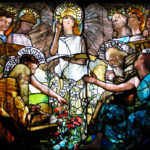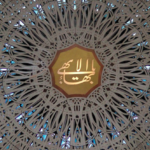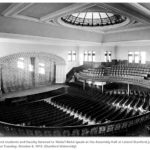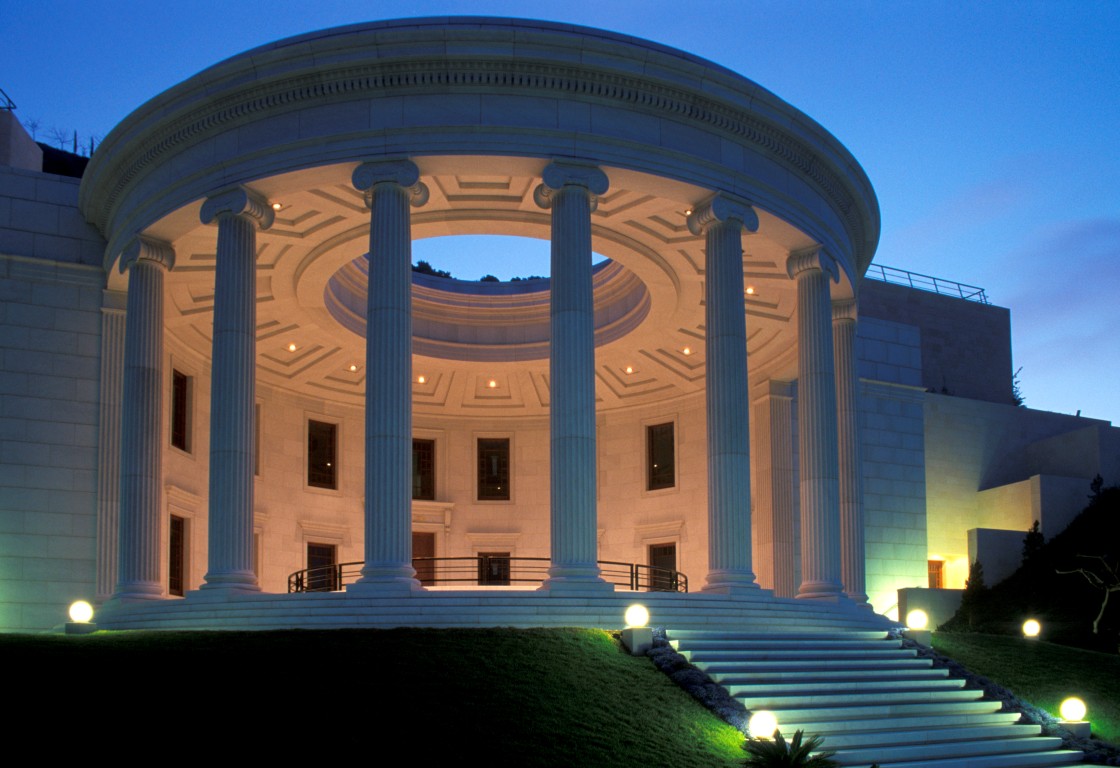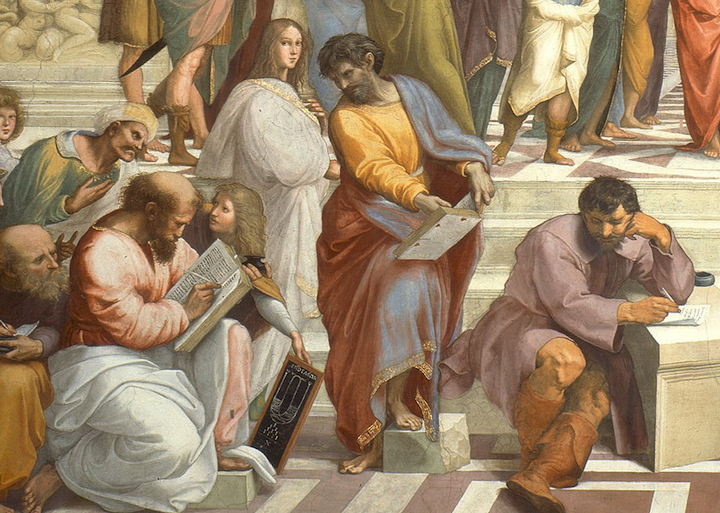
Harmony of Science and Religion: History of an Idea
 A Baha’i principle is that of harmony of science and religion. The use of “harmony” to express the relationship between science and religion is apt – as it captures the idea that each is incomplete without the other. Like notes in music, we don’t experience the beauty of the whole until we hear them together. Thus, as we have seen in previous articles, science is a means of freeing religion of superstition, prejudice and fanaticism and religion is a means of fostering the dedication of science to peace and human welfare.
A Baha’i principle is that of harmony of science and religion. The use of “harmony” to express the relationship between science and religion is apt – as it captures the idea that each is incomplete without the other. Like notes in music, we don’t experience the beauty of the whole until we hear them together. Thus, as we have seen in previous articles, science is a means of freeing religion of superstition, prejudice and fanaticism and religion is a means of fostering the dedication of science to peace and human welfare.
It is helpful to think about these concepts within the broader context of how the relationship between science and religion has been understood. While other relationships have been proposed (e.g. true vs false) a useful starting point is Stephen Gould’s concept of “non-overlapping magisteria” – essentially religion and science operate in two separate domains in which they speak without any essential incompatibility between the two (even if they butt up against each other from time to time). We can see that this is quite different to the concept of “harmony” between science and religion, as described by Abdu’l Baha.
The idea of non-overlapping magisteria has some superficial attractions (potential conflict is sidestepped). But, it also has some seriously problematic implications. One is that scientists can have nothing to contribute on questions of “values”. But it is impossible to separate science from values. The ability to split the atom – inevitably raises enormous questions of what we value as a society. Indeed, science’s capacity to change the environment on geological time-scales (the arrival of the anthropocene) implies that questions of values increasingly become central to the entire scientific enterprise. We need scientists to engage with values – both in their own work – and in public debates where values determine the choices society makes. Moreover, the public funding of science (driven by values) again implies the non-separability of these domains.
Stephen Gould is not the first to propose a “separate domains” model. In Europe, the idea goes back to the influence in Europe of an Islamic scholar, who lived in Andalusia (a region we now call Spain). That scholar was Ibn Rushd (Averroes). He was so well known in Europe for his commentaries on Aristotle that he was simply referred to as the “commentator”. When not writing on “philosophy”, Ibn Rushd worked as an Islamic judge. His ideas were not carried forward in Islamic realms, due to the largely mystical thought of Al Ghazali prevailing. However what he had to say profoundly influenced Europe. In an argument with Al Ghazali about the relationship between philosophy (i.e. investigation of the material world) and religion, he propounded the view that they are essentially different ways of reaching the truth and that they are not in conflict with each other.
What can be surprising to learn is how central “religious folk” were to the unfoldment of science in Europe (which is, of course, a subset of the science of the world). Right up until the scientific revolution, virtually everyone involved in science in Europe was a cleric. Conflict between science and religion (as we would interpret it today) boiled down to the clash of opinions and egos of different clerics. “Universities” were very different to today – they were places where clerics gathered to pursue learning – and to undertake the laborious work of copying out books by hand.
Late in the 13th century at such a place – the University of Paris – a trenchant argument unfolded between “Averroists” (followers of Averroes) led by Siger of Brabant – and other clerics who opposed them. The Averroists, drawing inspiration from their understanding of Averroes, began to hold doctrines that challenged articles of faith (such as placing limits on the omnipotence of God). After a lot of acrimony – the end result was a set of prohibitions by the local bishop that essentially separated philosophy from theology. Only those who had formally trained as theologians could speak about theology. However, by implication, philosophy would be left alone, as long as it did not presume to interfere with theology. It was a solution that kept the peace and allowed the different disciplines to continue their work. The idea of separateness, and indeed of inherent conflict between science and religion (based on such instances – which recur throughout history) is so powerfully rooted in our society, that it can be hard to even imagine a different relationship.
The ideas are so powerful that we can miss what the fields have in common. They, are, for instance, both concerned with knowledge. Both make extensive use of reason. Even concepts such as “inspiration” and “faith” – which we more readily associate with religion – have their place in science. Where do the ideas that great scientists have come from? While many come from careful study of reality – there are innumerable stories of dreams or sudden inspiration (like Archimedes sudden Eureka moment in a bath tub). In a previous article, we have seen the role of dreams in Baha’u’llah’s religious inspiration.
One passage from Baha’u’llah’s writings is worth quoting here, as it bears on the process of scientific inspiration. The turning in thought to a problem or issue will bring forth new insight:
O people of Bahá! The source of crafts, sciences and arts is the power of reflection. Make ye every effort that out of this ideal mine there may gleam forth such pearls of wisdom and utterance as will promote the well-being and harmony of all the kindreds of the earth.[1]
The process is not necessarily linear. Perhaps the most ironic example of inspiration by dreams is Rene Descartes attribution of his organisation of the process of science in the scientific method to dreams! Dreams, needless to say, are not typically included in a description of what science does.
In the twentieth century, philosophers of science began to systematically study the nature of science itself. As their study progressed, they found that traditional understandings of the scientific progress were contradicted by the history of science itself. Factors such as the scientific attraction to beauty and simplicity – and faith in order in the universe were powerful driving factors in the progress of science. If science was solely composed of the trenchantly skeptical it could not have progressed. It was many years before experiment confirmed the new ideas of Newton or Einstein and indeed sometimes experimental results contradicted theory, yet the ideas became articles of faith on which scientific progress was built. Thomas Kuhn is a helpful starting point for understanding these still evolving insights into the nature of science.
Selected Sources:
The Unofficial Stephen Gould Archive – Nonoverlapping Magisteria
Ibn Rushd (Averroes) 1126-1198 (Internet Encyclopedia of Philosophy)
7 Great Examples of Discoveries Made in Dreams
James Hannam, God’s Philosophers: How the Medieval World Laid the Foundations of Modern Science
Image Credit: An extract from the fresco “the School of Athens” (or Philosophy) by Raphael in Apostolic Palace in the Vatican. It is a tribute to the most influential philosophers. Ibn Rushd is believed to appear on the left of the image. The School of Athens appears opposite a fresco concerned with theology in the same room.
(This article is the 120th in a series of what I hope will be 200 articles in 200 days for the 200th anniversary of the birth of Bahá’u’lláh. The anniversary is being celebrated around the world on 21 and 22 October 2017, The articles are simply my personal reflections on Bahá’u’lláh’s life and work. Any errors or inadequacies in these articles are solely my responsibility.)

